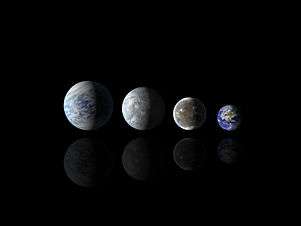(511002) 2013 MZ5
_2013_MZ5.gif) Asteroid 2013 MZ5 imaged by Pan-STARRS in June 2013 | |
| Discovery [1][2] | |
|---|---|
| Discovered by | Pan-STARRS 1 |
| Discovery site | Haleakala Obs. |
| Discovery date | 18 June 2013 |
| Designations | |
| MPC designation | (511002) 2013 MZ5 |
| 2013 MZ5 | |
| NEO · Amor [1][2] | |
| Orbital characteristics [1] | |
| Epoch 23 March 2018 (JD 2458200.5) | |
| Uncertainty parameter 1 | |
| Observation arc | 4.55 yr (1,662 days) |
| Aphelion | 1.8270 AU |
| Perihelion | 1.2781 AU |
| 1.5525 AU | |
| Eccentricity | 0.1768 |
| 1.93 yr (707 days) | |
| 95.965° | |
| 0° 30m 34.2s / day | |
| Inclination | 29.146° |
| 93.511° | |
| 274.19° | |
| Earth MOID | 0.4601 AU (179.2 LD) |
| Physical characteristics | |
Mean diameter | 290 m (est. at 0.20)[3] |
| 20.1[1] | |
|
| |
(511002) 2013 MZ5 , provisional designation 2013 MZ5, is a sub-kilometer asteroid, classified as a near-Earth object of the Amor group, approximately 300 meters in diameter. It was discovered on 18 June 2013, by Pan-STARRS at Haleakala Observatory on the island of Maui, Hawaii, in the United States.[2] It was the 10,000th near-Earth object ever discovered.[4]
Orbit and classification
2013 MZ5 is an Amor asteroid – a subgroup of near-Earth asteroids that approach the orbit of Earth from beyond, but do not cross it. It orbits the Sun at a distance of 1.3–1.8 AU once every 23 months (707 days; semi-major axis of 1.55 AU). Its orbit has an eccentricity of 0.18 and an inclination of 29° with respect to the ecliptic.[1] The body's observation arc begins with its official discovery observation at Haleakala in June 2013.[2]
Close approaches
The asteroid has an Earth minimum orbital intersection distance of 68,800,000 km (0.4601 AU), which translates into 179 lunar distances. It also makes close approaches to Mars. On 28 August 2125, it is projected to pass the Red Planet at a nominal distance of 13,600,000 km (0.0910 AU). With an aphelion of 1.83 AU, it is also a Mars-crossing asteroid.[1]
10,000th discovered NEO
2013 MZ5 was the 10,000th near-Earth object (NEO) ever discovered and considered a significant milestone in exploring the NEO population.[4]
Physical characteristics
Diameter and albedo
Based on a generic magnitude-to-diameter conversion, 2013 MZ5 measures approximately 290 meters in diameter for a measures absolute magnitude of 20.1 and an assumed albedo 0.20, typical for stony asteroids.[3]
As of 2018, no rotational lightcurve of 2013 MZ5 has been obtained from photometric observations. The object's rotation period, pole and shape remain unknown.[1][5]
Numbering and naming
This minor planet was numbered by the Minor Planet Center on 31 January 2018.[6] It has not been named yet.[2]
References
- 1 2 3 4 5 6 7 "JPL Small-Body Database Browser: 511002 (2013 MZ5)" (2018-01-05 last obs.). Jet Propulsion Laboratory. Retrieved 7 February 2018.
- 1 2 3 4 5 "511002 (2013 MZ5)". Minor Planet Center. Retrieved 7 February 2018.
- 1 2 "Asteroid Size Estimator". CNEOS NASA/JPL. Retrieved 12 November 2017.
- 1 2 "511002 (2013 MZ5)". NASA/JPL. 24 June 2013. Retrieved 7 February 2018.
- ↑ "LCDB Data for (511002) – Not in Data Base". Asteroid Lightcurve Database (LCDB). Retrieved 7 February 2018.
- ↑ "MPC/MPO/MPS Archive". Minor Planet Center. Retrieved 7 February 2018.
External links
- Asteroid Lightcurve Database (LCDB), query form (info)
- Discovery Circumstances: Numbered Minor Planets (510001)-(515000) – Minor Planet Center
- (511002) 2013 MZ5 at the JPL Small-Body Database



